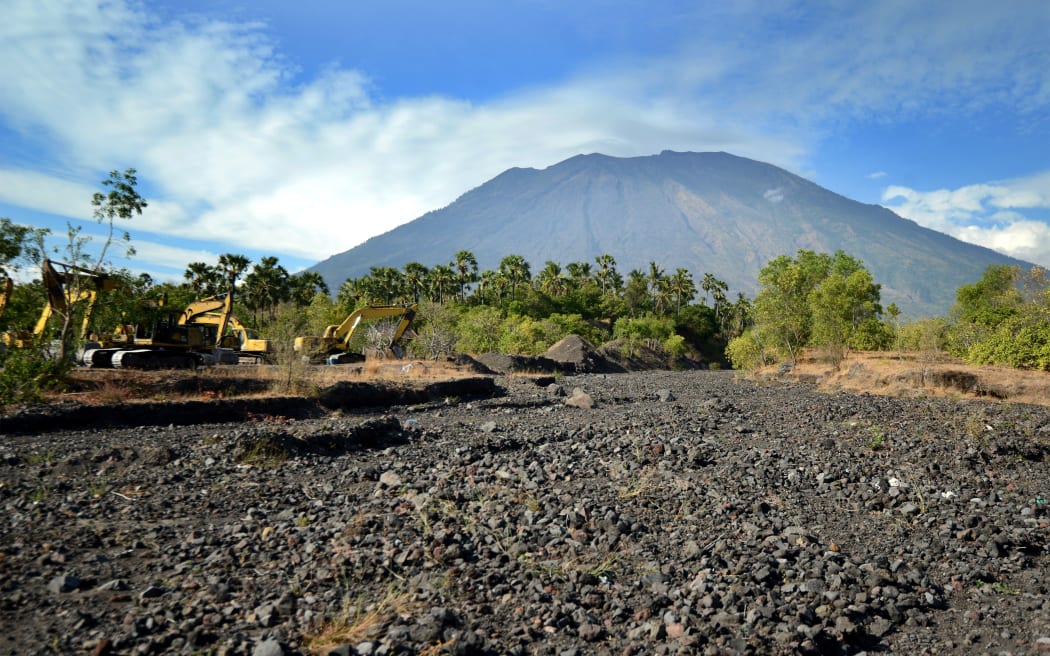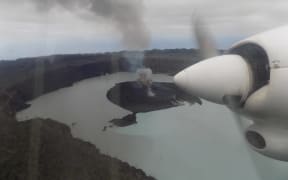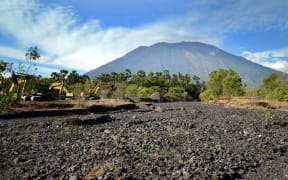New Zealand has issued a travel warning for the popular holiday island of Bali in Indonesia, with fears a volcano could erupt imminently.

Mount Agung Photo: AFP
Indonesian authorities have been racing to evacuate tens of thousands of people living in the "danger zone" near the Mount Agung volcano.
The advisory warned that the increased volcanic activity in in eastern Bali could disrupt flights, and travellers should register with the Ministry of Foreign Affairs and Trade.
Further east, a state of emergency has been declared on the Vanuatu island of Ambae as the Monaro volcano continues belch ash, forcing the evacuation of about 5000 people.
The Red Cross in Bali said more than 42,000 people have been evacuated and in the area around Mt Agung there has been hundreds of tremors and signs of magma rising to the surface in recent days.
Authorities have imposed a 12km exclusion zone around the mountain and issued their highest level alert on Friday.

People gather at an evacuation area with their belongings in Klungkung regency in Bali. Photo: AFP
The island's main tourist areas and flights remain unaffected for now.
A 200m-tall column of smoke was seen rising from the mountain early on Sunday, said the chief geologist monitoring the site, Gede Suantika.
He told the Reuters news agency: "We observed sulphuric smoke spewing from its crater and we never saw this before."
Here it is : The lastest update #siagagunungagung response #pmisiapbantu (25/9) pic.twitter.com/BP7hIVPK19
— Indonesian Red Cross (@palangmerah) September 25, 2017
Officials said they started detecting shallow tremors in late August, and first raised the alert from "normal" to the second-tier "vigilant" level on 14 September. Indonesia has a four-level volcano alert system.
Within days the volcano showed increasing signs of activity, and authorities stepped up their alerts and evacuations of the rural villages surrounding the mountain. The area is now under the highest caution level.
Thousands of Balinese are now living in shelters in town halls and schools, with authorities trucking in tonnes of aid supplies. Some communities have also set up livestock shelters for the cows, The Jakarta Post has reported.
Many villagers were still visiting their homes in the daytime and life was continuing normally, Reuters has reported.
This graph shows why vulcanologists think Bali's Mt Agung will explode soon - look at spike in red trend line showing energy of tremors. pic.twitter.com/4Fb4oMpUIx
— Adam Harvey (@adharves) September 24, 2017
Mount Agung, which is more than 3000m above sea level, lies in the eastern part of Bali, which is a popular tourist destination.
The volcano is about 70km from the main tourist areas of Kuta and Seminyak, which remain unaffected for now.
The local tourism board said on Sunday that boats connecting to neighbouring islands Lombok and Java, also popular with holidaymakers, were on schedule.
The board said that though there was no volcanic ash detected, visitors were still advised to "start preparing sufficient stock of face masks" in case of an eruption.
Several countries including Britain, Australia and Singapore have issued travel advisories for their citizens.
More than 1000 people died when Mount Agung last erupted in 1963.
Bali is much more densely populated than it was in 1963. But it also has better infrastructure, and technical developments have made it possible to detect dangers earlier and implement better emergency plans.
Mount Agung is among about 130 active volcanoes in Indonesia - an archipelago prone to volcanic eruptions and earthquakes as it sits on the Pacific "Ring of Fire".
- BBC




